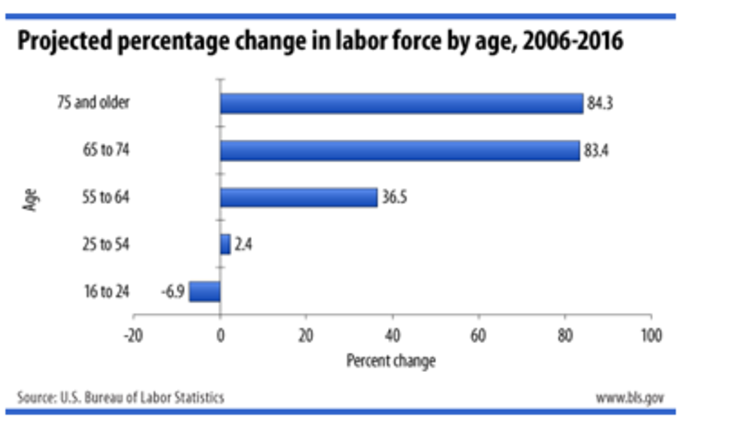Consultants and organizations often define strategic sourcing differently, so it is important to clarify the term when discussing implementation and impact. Some definitions include:
- An organized, systematic, and collaborative way to identify competitive suppliers for longer term agreements to buy materials and services that firms need for direct and indirect purposes
- A comprehensive approach for locating and sourcing key material suppliers including the business process of analyzing total spend for material categories
Some organizations use the term “commodity management” rather than strategic sourcing for this organizational initiative. No matter how it is defined, strategic sourcing plays a critical role in ensuring delivery of the right material or services at the right time, at the right quantity, at the right quality, at the right price, from the right supplier, and with the right service level. It is listed by business experts as number one in the top five supply chain best practices along with operations and logistics, customer relationship management, information technology, and change management. As organizations embrace supply chain management and its call for collaborative relationships, managing supply and the supply base have grown in importance.
The process of strategic sourcing or commodity management begins with a discussion and understanding of organizational intelligence. This includes the business’s vision, mission, values, objectives, goals, and challenges. Also, important considerations are the company’s core competency or competencies, critical success factors, and business model. There should also be a review of the purchasing guidelines of the organization such as minority, small business, and women business enterprise efforts; green initiatives; single or multiple sourcing plans; local, national, or international guidelines; distributors vs. manufacturing; etc.
Next, a cross-functional team will gather a list of all material and service buys that are to be in the program. This will include quantity and dollar volume, number of suppliers, as well as purchase timing and history. The products and services will then be segmented into groupings such as acquisition, multiple, leverage, and critical.
The Acquisition segment includes the low MRO items with few suppliers and high transactional costs. Multiple is also known as MRO or materials and services but with a greater number of sources and a higher dollar value. Leverage represents those items commonly used by several organizations and with many possible supply sources. Finally, Critical defines those items and services strategic to the business, often customized and expensive. Once the team has segmented the various purchases, they identify different strategies to manage the availability of these materials and services, and create a long-term strategic management plan.
A supply base review is next with a total review of all suppliers, performance, purchase volume, single or multiple, locations, and history. The goal is optimizing the supply base - not just downsizing the number of suppliers. It is about the right number of suppliers performing at the value-add level, at the right locations, at the right contracting level, and at the right pricing.
Many organizations segment suppliers into one of four quadrants: bottleneck, non-critical, leverage, or strategic. Appropriate strategies for each quadrant are identified and established for managing the evaluation, selection, performance management, and development of suppliers to support the success of the organization’s core competencies, critical success factors, business model, and customers. The strategic sourcing team will also consider the number of suppliers, location and proximity, type of relationship, and value-add opportunities in optimizing the supply base, and recommend changes to the organization’s existing supply guidelines.
Ultimately, the strategic sourcing team will develop and follow long-term action plans that include strategies in sourcing and managing materials and services and a portfolio of suppliers supporting the success of the organization. This is an opportunity as well to consider quality levels, cost reduction, risk management, compliance, and total cost of ownership possibilities since the team will be reviewing all spend and supply base areas.
Strategic sourcing or commodity management is an organization-wide program and calls for buy-in from senior management for funding and support. The program will impact everyone in the organization and will require ongoing communication with internal customers. They should know about the initiative and be kept current on its progress and implementation through internal postings and status updates.
A good strategic sourcing plan includes how the program will be implemented, managed, controlled, measured, changed, and evaluated. To succeed, those designing, implementing, and managing the program need strong collaborative and influencing skills, analytical ability, financial understanding, end-to-end focus, business case development skill, and business process design capability.
This article is part of the monthly series authored by ISM’s Logistics & Transportation Group Board Members, who are current practitioners, consultants, trainers, and educators. In future columns, they will continue sharing their views on a number of Supply Chain and Personal Development topics.
Marilyn Gettinger is the owner of New Directions Consulting Group, which offers customized workshops and a team-oriented consulting method to assist organizations in being successful in their global supply chain management efforts. She can be reached at mgettinger@aol.com, or (908) 709-0656, or www.consultwithnewdirections.com.
- An organized, systematic, and collaborative way to identify competitive suppliers for longer term agreements to buy materials and services that firms need for direct and indirect purposes
- A comprehensive approach for locating and sourcing key material suppliers including the business process of analyzing total spend for material categories
Some organizations use the term “commodity management” rather than strategic sourcing for this organizational initiative. No matter how it is defined, strategic sourcing plays a critical role in ensuring delivery of the right material or services at the right time, at the right quantity, at the right quality, at the right price, from the right supplier, and with the right service level. It is listed by business experts as number one in the top five supply chain best practices along with operations and logistics, customer relationship management, information technology, and change management. As organizations embrace supply chain management and its call for collaborative relationships, managing supply and the supply base have grown in importance.
The process of strategic sourcing or commodity management begins with a discussion and understanding of organizational intelligence. This includes the business’s vision, mission, values, objectives, goals, and challenges. Also, important considerations are the company’s core competency or competencies, critical success factors, and business model. There should also be a review of the purchasing guidelines of the organization such as minority, small business, and women business enterprise efforts; green initiatives; single or multiple sourcing plans; local, national, or international guidelines; distributors vs. manufacturing; etc.
Next, a cross-functional team will gather a list of all material and service buys that are to be in the program. This will include quantity and dollar volume, number of suppliers, as well as purchase timing and history. The products and services will then be segmented into groupings such as acquisition, multiple, leverage, and critical.
The Acquisition segment includes the low MRO items with few suppliers and high transactional costs. Multiple is also known as MRO or materials and services but with a greater number of sources and a higher dollar value. Leverage represents those items commonly used by several organizations and with many possible supply sources. Finally, Critical defines those items and services strategic to the business, often customized and expensive. Once the team has segmented the various purchases, they identify different strategies to manage the availability of these materials and services, and create a long-term strategic management plan.
A supply base review is next with a total review of all suppliers, performance, purchase volume, single or multiple, locations, and history. The goal is optimizing the supply base - not just downsizing the number of suppliers. It is about the right number of suppliers performing at the value-add level, at the right locations, at the right contracting level, and at the right pricing.
Many organizations segment suppliers into one of four quadrants: bottleneck, non-critical, leverage, or strategic. Appropriate strategies for each quadrant are identified and established for managing the evaluation, selection, performance management, and development of suppliers to support the success of the organization’s core competencies, critical success factors, business model, and customers. The strategic sourcing team will also consider the number of suppliers, location and proximity, type of relationship, and value-add opportunities in optimizing the supply base, and recommend changes to the organization’s existing supply guidelines.
Ultimately, the strategic sourcing team will develop and follow long-term action plans that include strategies in sourcing and managing materials and services and a portfolio of suppliers supporting the success of the organization. This is an opportunity as well to consider quality levels, cost reduction, risk management, compliance, and total cost of ownership possibilities since the team will be reviewing all spend and supply base areas.
Strategic sourcing or commodity management is an organization-wide program and calls for buy-in from senior management for funding and support. The program will impact everyone in the organization and will require ongoing communication with internal customers. They should know about the initiative and be kept current on its progress and implementation through internal postings and status updates.
A good strategic sourcing plan includes how the program will be implemented, managed, controlled, measured, changed, and evaluated. To succeed, those designing, implementing, and managing the program need strong collaborative and influencing skills, analytical ability, financial understanding, end-to-end focus, business case development skill, and business process design capability.
This article is part of the monthly series authored by ISM’s Logistics & Transportation Group Board Members, who are current practitioners, consultants, trainers, and educators. In future columns, they will continue sharing their views on a number of Supply Chain and Personal Development topics.
Marilyn Gettinger is the owner of New Directions Consulting Group, which offers customized workshops and a team-oriented consulting method to assist organizations in being successful in their global supply chain management efforts. She can be reached at mgettinger@aol.com, or (908) 709-0656, or www.consultwithnewdirections.com.






